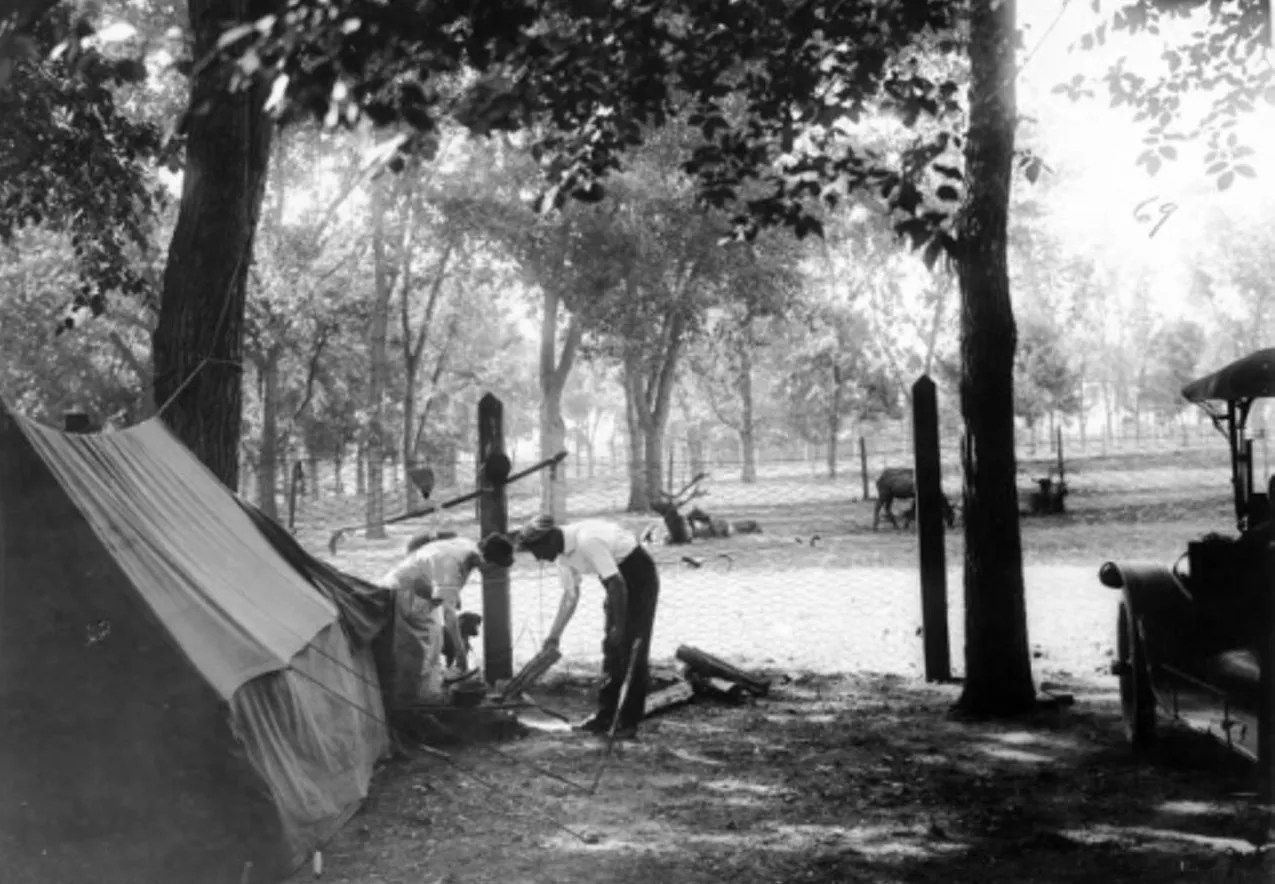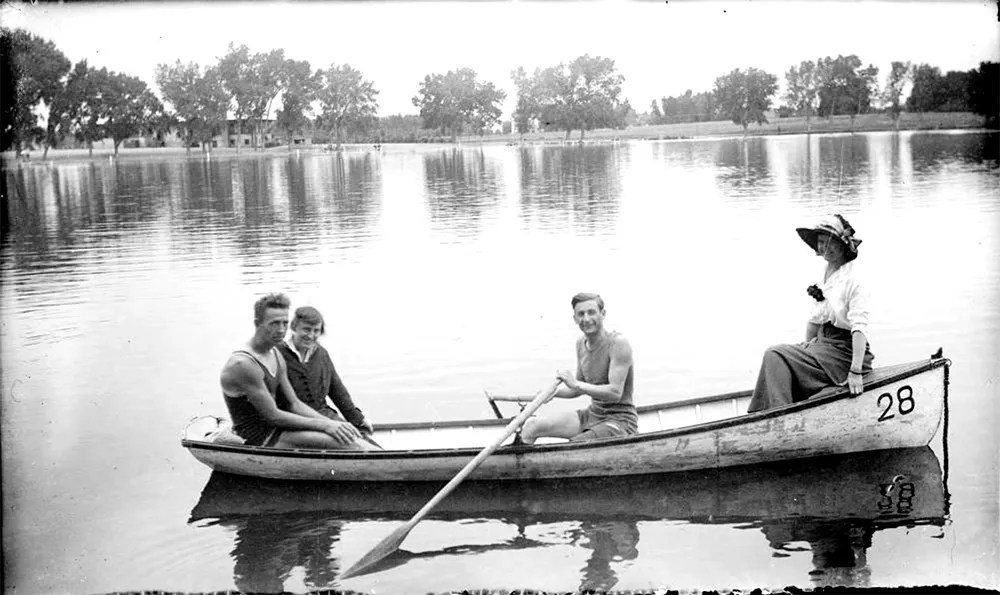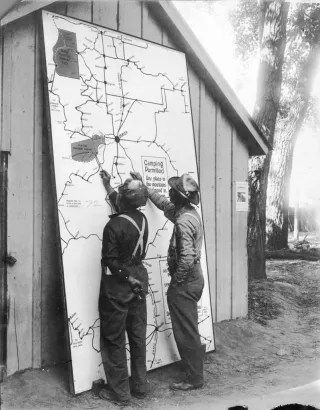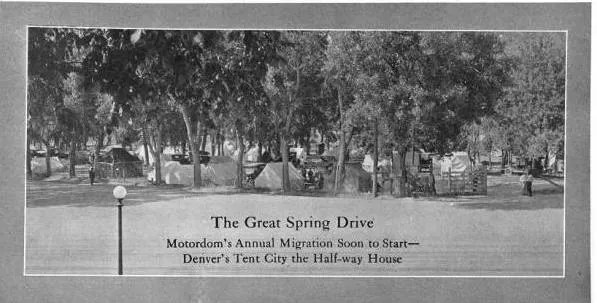
Denver Public Library / Free Campground in City Park

Audio By Carbonatix
In 1915, Denver’s City Park introduced a groundbreaking concept: a free urban campground.
This motor camp drew a new generation of leisure seekers from around the country, empowered by the advent of the automobile. It was a time when Americans, inspired by the writings of William H.H. Murray, the man widely credited as the father of America’s outdoor movement, and John Muir, the notable author and co-founder of the Sierra Club, were looking for a new style of vacation…sometimes in the wilderness, sometimes just in a city’s back yard.
The urban campground in City Park boasted natural seclusion right in Denver, with auto-friendly campsites and plenty of recreational opportunities for the wealthy, who could afford early auto travel.

Campers in a canoe at City Park Lake in Denver sometime before 1916.
Charles Lillybridge/History Colorado/90.152.417 DPLY
Will you step up to support Westword this year?
At Westword, we’re small and scrappy — and we make the most of every dollar from our supporters. Right now, we’re $23,250 away from reaching our December 31 goal of $50,000. If you’ve ever learned something new, stayed informed, or felt more connected because of Westword, now’s the time to give back.
Within the first year, car campers were flocking to Denver. Nearly 2,000 vehicles brought over 5,000 visitors from across the country; the park even documented a visitor from the Philippine Islands. But the crowds overwhelmed the city’s expectations, and in 1916, Denver Parks and Recreation officials decided to expand the campground mid-season, with plans to further expand the following year. Men examine a road map of City Park’s auto park. Denver Public Library / Free Campground in City Park
Although the City Park motor camp only lasted three years, authorized urban camping continued at various locations, including Rocky Mountain Lake Park in northwest Denver and Overland Park on the South Platte River.
Founded in 1920, the Overland Park motor camp boasted shiny new creature comforts: fuel, toilets and showers, along with a restaurant, a billiard hall, a dance floor and a barbershop.
But according to the Colorado Department of Transportation, some condemned these camps as “dangerous to public morals.”
In 1923, the city worked to address that concern with a fifty-cent-per-night fee designed to bring in more upstanding tourists and prevent tomfoolery.
Then came the Great Depression, and the look of Denver’s urban camping changed forever.
Within a year of the stock market crash, displaced people took up residence in Overland Park. In response, the city closed the grounds. But a much larger encampment took over Denver’s Civic Center Park for years, and other shantytowns known as “Hoovervilles,” after President Herbert Hoover, popped up around town.
In recent years, Civic Center Park has again become a popular gathering place for displaced individuals. But on April 11, as coronavirus spread, city officials closed the park as a public-health hazard. Now the city plans a sweep of other unauthorized urban camping areas, with the cleanup set to take place on April 30.
Mayor Michael Hancock’s administration has established two auxiliary shelters that offer housing and testing for homeless individuals. But shelters are not a match for all, and advocates are pushing for a temporary “safe outdoor space” that would provide hygiene facilities, medical care, testing, food and a safe area for physical distancing.
It won’t be as glamorous as the city’s urban camping sites of a century ago, but for those looking for a place to rest, it could be just as welcoming.

Denver Public Library